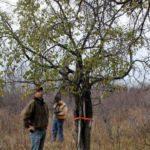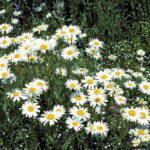Reading Time: 2 minutes Often found in high densities across Alberta, perennial sow thistle seems to be a noxious weed that doesn’t quit. Not only does this pest cause significant yield loss in many crops, but it’s a host for several plant pests that attack economically important crops such as alfalfa, winter wheat and canola — just to name […] Read more

Perennial sow thistle costs farmers across Alberta
Noxious Weeds: Perennial sow thistle causes yield loss and acts as a host for pests

A weed that prospers on degraded pasture
Noxious Weeds: Hoary alyssum
Reading Time: 2 minutes Thought to be brought to North America as a seed contaminant from Europe, hoary alyssum is toxic to horses and other livestock. It has a variety of life cycles depending on site and weather conditions, which makes this weed tricky to control. A prohibited noxious weed in Alberta, this pest can be easily identified. Hoary […] Read more

This quick-spreading weed gets an early start
Noxious weeds: Canada thistle
Reading Time: < 1 minute Spring brings lovely native flowers, but also noxious weeds. The aggressive perennial Canada thistle is a favourite of disturbed soils of all types. It starts sending shoots from horizontal roots to the surface of soil around mid-April, with flowers to follow in mid-June and continuing throughout the summer. Easy to distinguish from other weeds, this […] Read more

This tree is also a noxious weed
Reading Time: < 1 minute Common buckthorn, otherwise known as European buckthorn, has been found in two locations in Alberta — in Edmonton along the North Saskatchewan River and in Stettler County. It was originally brought to North America from Eurasia as an ornamental, but soon spread throughout the continent. High seed production and excellent tolerance to Canada’s climate allow […] Read more

Ox-eye daisy not just a pretty wildflower
Reading Time: < 1 minute Ox-eye daisy is a noxious weed that has been spotted throughout Alberta, especially in central and southwest areas of the province. It commonly grows along roadsides, waterbodies, fields and pastures, forest openings, disturbed areas, and urban areas. This weed looks similar to scentless chamomile and is often not perceived as an invasive plant because it […] Read more

This toxic hitchhiker is a threat to livestock
Noxious Weeds: Hound's tongue
Reading Time: < 1 minute Hound’s tongue is a weak competitor and doesn’t do well in healthy rangeland — but it compensates for that by being an excellent hitchhiker. This noxious weed produces up to 4,000 seeds per plant, and each one is barbed and easily attaches itself to clothing or fur. It also produces toxic alkaloids that cause irreversible […] Read more

A wolf in sheep’s clothing
Noxious Weeds: Baby's breath
Reading Time: < 1 minute Many people think of baby’s breath as a cute, delicate filler flower found in rose bouquets. The real plant found in the Prairies couldn’t be further from this image. This weed has a taproot that can reach the astonishing depth of four metres, and it can grow as wide as 41 centimetres in circumference. And […] Read more

Beware of this ornamental escapee
Reading Time: < 1 minute It has a beautiful yellow showy flower, but do not let that fool you — Bighead Knapweed is highly invasive. This invader is a long-lived perennial native in eastern Europe. It produces an abundance of seeds, which have bristles that can easily attach to animal fur. It can be found in flower beds throughout Alberta. […] Read more

Keep watch for this wetland invader
Reading Time: < 1 minute Flowering rush has been spotted in a few locations in Alberta, including an infestation on Lake Isle, located in Lac St. Anne and Parkland counties. Flowering rush is a perennial of freshwater wetlands that is native to Africa, Asia and Europe and was introduced to North America as an ornamental plant species. It is a […] Read more

Garlic mustard: An odorous invader
Reading Time: < 1 minute So far, garlic mustard has only been reported in Edmonton and St. Albert. While this species has not yet been spotted in agricultural areas, early identification and response is key in preventing the spread of this biennial weed. Garlic mustard has severely invaded forest understoreys in other provinces, as it generally prefers shaded areas and […] Read more

